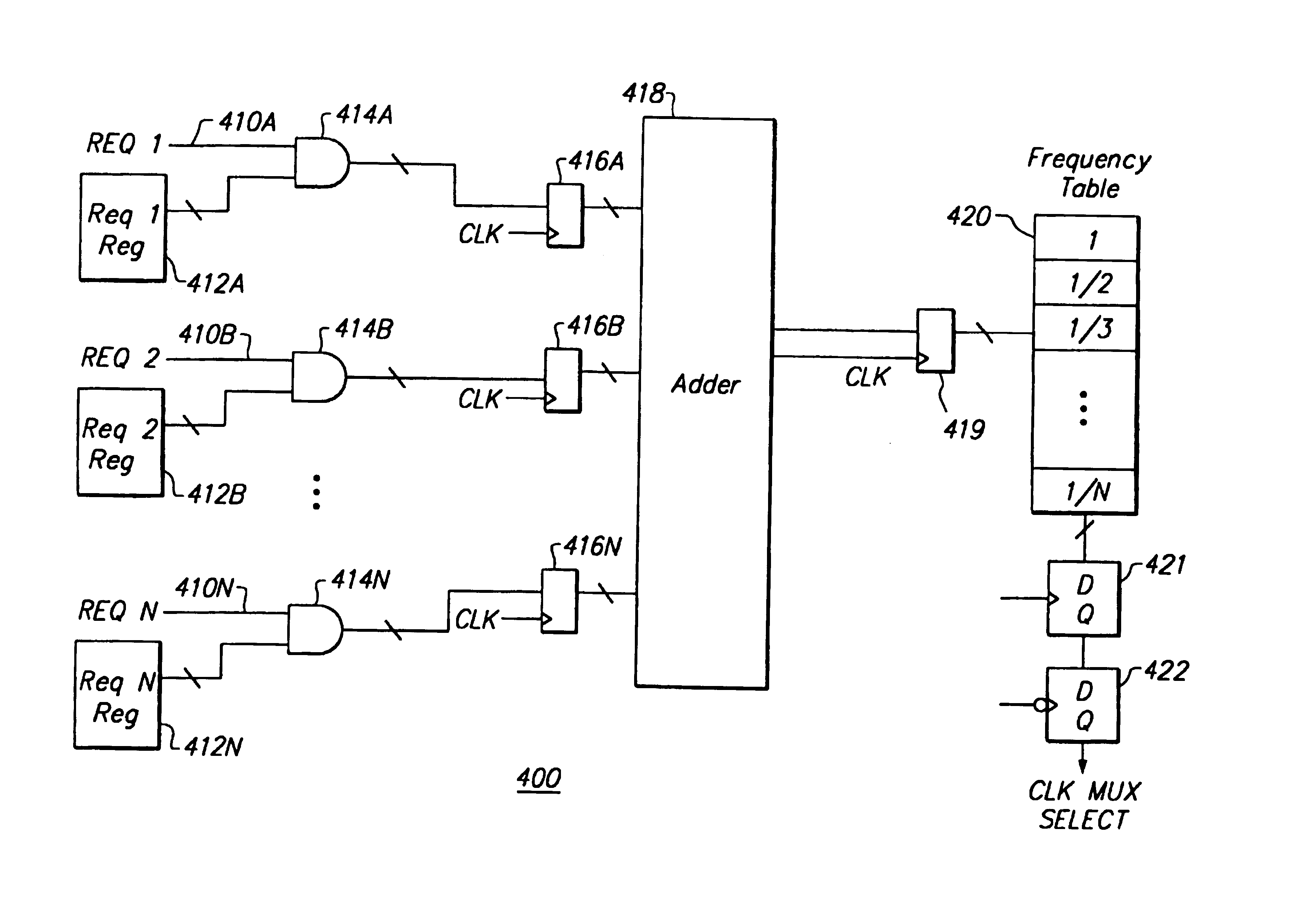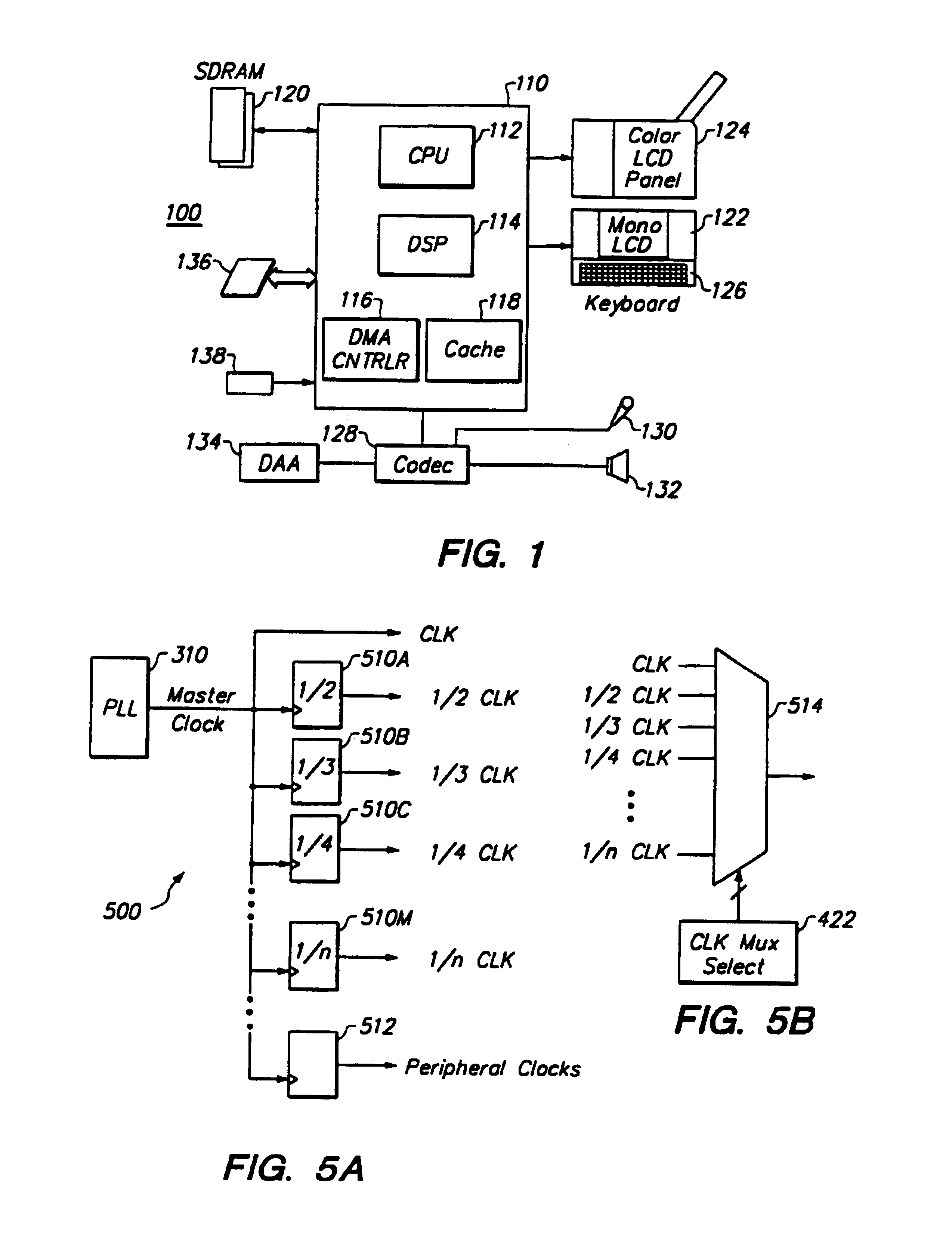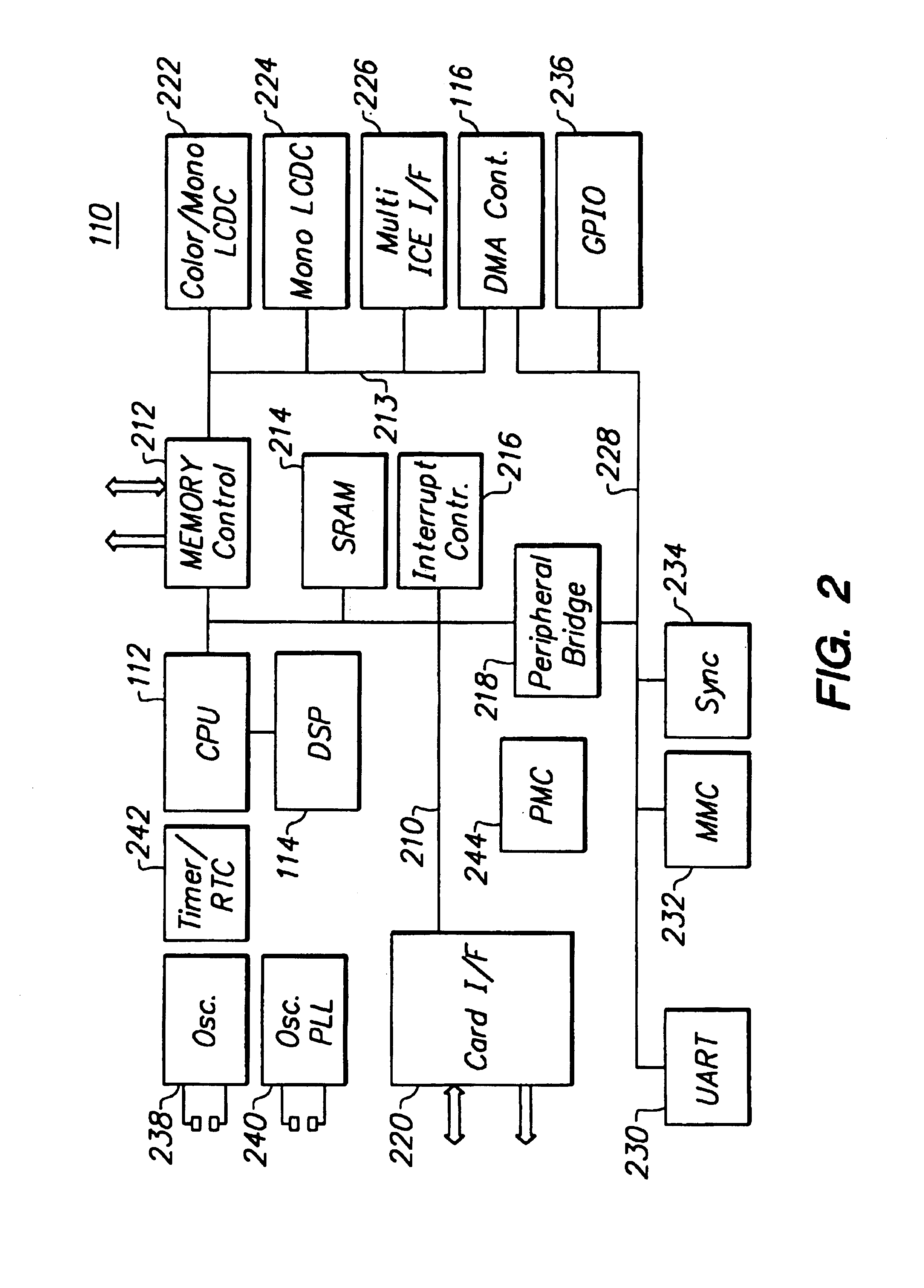System and method for dynamic clock generation
a dynamic clock and clock technology, applied in the field of portable electronic devices, can solve the problems of essentially waste of power used to operate at the higher-frequency clock, a significant amount of power required by the clock asic to provide this functionality, and achieve the effect of saving power and reducing power consumption
- Summary
- Abstract
- Description
- Claims
- Application Information
AI Technical Summary
Benefits of technology
Problems solved by technology
Method used
Image
Examples
Embodiment Construction
[0026]FIG. 1 is a high-level diagram illustrating the components of a typical portable electronic device 100 according to an embodiment of the present invention. As used herein, the phrase “portable electronic device” refers to the class of devices including smart telephones, screen telephones, and other Internet-ready appliances. The phrase also includes devices such as digital cameras, portable music players, and hand-held computer systems. Of course, the present invention has broad applicability and can be used with any electronic device where power conservation is desired, regardless of whether the device is portable.
[0027]FIG. 1 illustrates an application specific integrated circuit (ASIC) 110, preferably manufactured using a complementary metal oxide semiconductor (CMOS) process, and having a central processing unit (CPU) 112, a digital signal processor (DSP) 114, a direct memory access (DMA) controller 116, and a memory cache 118. Although a preferred embodiment of the presen...
PUM
 Login to View More
Login to View More Abstract
Description
Claims
Application Information
 Login to View More
Login to View More - R&D
- Intellectual Property
- Life Sciences
- Materials
- Tech Scout
- Unparalleled Data Quality
- Higher Quality Content
- 60% Fewer Hallucinations
Browse by: Latest US Patents, China's latest patents, Technical Efficacy Thesaurus, Application Domain, Technology Topic, Popular Technical Reports.
© 2025 PatSnap. All rights reserved.Legal|Privacy policy|Modern Slavery Act Transparency Statement|Sitemap|About US| Contact US: help@patsnap.com



